Eureka: Heliocentrism is a hypotheis, not a fact!
Science vs. Religion
In his Arenarius published in Basel (1544) Archimedes mentions Aristarchus's heliocentrism as follows:
...Aristarchus of Samos has set forth writings of certain hypotheses, in which from the things that are established it follows that the universe is many times greater than that now told. For it is proposed that the fixed [ones] of the stars and the sun remain motionless, and that the earth is borne around the sun along the circumference of a circle, [the sun] remaining in the middle of the course, and the sphere of the fixed stars lying around the same center as the sun being of so great a magnitude, that the circle, along which the earth is presumed to be borne, has such a proportion to the distance of the fixed [ones], as the center of the sphere has to the surface...
... Ἀρίσταρχος δὲ ὁ Σάμιος ὑποθέσιών τινῶν ἐξέδωκεν γραφάς, ἐν αἷς ἐκ τῶν ὑποκειμένων συμβαίνει τὸν κόσμον πολλαπλάσιον εἶμεν τοῦ νῦν εἰρημένου. Ὑποτίθεται γὰρ τὰ μὲν ἀπλανέα τῶν ἄστρων καὶ τὸν ἅλιον μένειν ἀκίνητον, τὰν δὲ γᾶν περιφέρεσθαι περὶ τὸν ἅλιον κατὰ κύκλου περιφέρειαν, ὅς ἐστιν ἐν μέσῳ τῷ δρόμῳ κείμενος, τὰν δὲ τῶν ἀπλανέων ἄστρων σφαῖραν περὶ τὸ αὐτὸ κέντρον τῷ ἁλίῳ κειμέναν τῷ μεγέθει τηλικαύταν εἶμεν, ὥστε τὸν κύκλον, καθ᾿ ὃν τὰν γᾶν ὑποτίθεται περιφέρεσθαι, τοιαύταν ἔχειν ἀναλογίαν ποτὶ τὰν τῶν ἀπλανέων ἀποστασίαν, οἵαν ἔχει τὸ κέντρον τᾶς σφαίρας ποτὶ τὰν ἐπιφάνειαν ...
So far as hypotheses are concerned, let no one expect anything certain from astronomy, which cannot furnish it, lest he accept as the truth ideas conceived for another purpose, and depart from this study a greater fool than when he entered it. (Quotation of Nicolaus Copernicus)
Archimedes's saying: “Give me a place to stand on, and I will move the earth.”
is the best evidence that he believed in unmoved earth.
As a Greek patriot, Archimedes was no friend of the Roman Sun-Empire. He invented machines that drove the Roman general Marcellus' army from the walls of Syracuse. He also designed a system of mirrors that concentrated the sun's rays to set enemy ships on fire. A story has it that a Roman soldier ran a sword through him while he was drawing geometrical figures in the sand.
A reference to Aristarchus in the autograph manuscript of Copernicus's De revolutionibus still preserved at the Jagiellonian Library in Cracow referring to the Greek astronomer's cosmology was crossed out before publication. We may safely assume that his reason for the deletion was expressed in the following passage of his dediactory Letter to Pope Paul III published as preface to his book:
“Therefore, having turned over in my mind for a long time this uncertainty of the traditional mathematical methods of calculating the motions of the celestial bodies, I began to grow disgusted that no more consistent scheme of the movements of the mechanism of the universe, set up for our benefit by that best and most law abiding Architect of all things, was agreed upon by philosophers who otherwise investigate so carefully the most minute details of this world. Wherefore I undertook the task of rereading the books of all the philosophers I could get access to, to see whether any one ever was of the opinion that the motions of the celestial bodies were other than those postulated by the men who taught mathematics in the schools. and I found first, indeed, in Cicero, that Niceta perceived that the Earth moved; and afterward in Plutarch I found that some others were of this opinion.” The names he mentioned, and especially these of Cicero and Plutarch prove that “he accepted as the truth ideas conceived for another purpose.”
The Copernican heliocentrism was originally known as Astronomia Pythagorica and Pythagoras was regarded as the founder of the British Masonry and that explains his apellation of God as Architect. In the British Constitution of Freemasons (1723) we find: “And so the first parent created after the image of God, the Great Archirect of the Universe...Spreading the masonic atheist religion was the most important purpose of Copernicus's book.
Roman Empire's Global Solar Religion or, Cuius Regio, eius Religio
In 59 B.C. Cicero, a heliocentrist and therefore a votary of the sun god, explains the reasons why Roman patience might, and would, break down: “Even while Jerusalem was standing and the Jews were at peace with us, the practice of their sacred rites was at variance with the glory of our empire, the dignity of our name, the customs of our ancestors. But now it is even more so, when that nation by its armed resistance has shown what it thinks of our rule. How dear it was to the immortal gods is shown by the fact that it has been conquered, let out for taxes, made slave.” To Cicero the Jews were a nation born to servitude (nationibus nati servituti). Understandably, Cicero was vexed by the teaching of the Hebrew Bible which forbade worship of the sun and all other “host of heaven” which also precluded astrology in any form (Dt 4:19)
Augustus’s great victory at the battle of Actium was won in the vicinity of a Temple to Apollo, which he proceeded to restore; Apollo, he claimed had appeared to him at a decisive moment in the battle. After the victory, Augustus built the Temple of Apollo on the Palatine in Rome, and added to it two fine libraries of Greek and Latin books, and a portico in which Greek sculpture was displayed. He transferred to the new temple the Sibylline Books from the Temple of Jupiter on the Capitol, and deposited them under the cult statue of Apollo in two gilt coffers. Apollo was a God of restraint, sexual moderation and homosexuality (as exemplified in his love for Hyacinth). In 6 CE Augustus added Judea, Samaria and Idumea to the Roman province of Syria. Christianity was born and developed in a part of Greater Syria called Palestine. And that explains maniacal attempts of John Paul II at establishing an “independent” Palestinian state.
Augustus did all he could to make men feel that the god Apollo had left Greece for Rome and had brought with him the spiritual and cultural leadership of the world, like the Apollo Program was supposed to bring this leadership to the USA. At least President Johnson entertained such a belief.
There was a widespread expectation current through much of earlier part of the century, that a new era which would be a second Golden Age was about to begin. Jesus of the Fourth Gospel is a son of the Cosmic Virgin, representative of “a new race descended from Heaven on high,” foretold by Virgil in his “Fourth Eclogue”. (A graffiti found in a Libyan necropolis praises Jesus as “Father who brought down the golden generation,” or “children of light”/sun in the language of the Gospel of John). Well, the Father and Patron Saint of the British masonry, Pythagoras was said to be the son of Apollo and a mortal woman called Parthenia, whose name derives from the word parthenos, meaning ‘virgin’.
“All-nurturing Sun” is praised by Horace and in Virgil’s Aeneid we find “Sun, whose fires lighten all the works of the world.” And this tradition was continued forever; Nero built his Golden House and prefaced it with a colossus 120 feet high, bearing the likeness of his head haloed with solar rays that identified him with Apollo. Septimus Severus took as his wife Julia Domna, daughter of the High Priest of Emesa because the sun cult of this city and the huge architectural precinct at Baalbek (Heliopolis) attracted pilgrims from far and wide. In many ancient pictures of the Saviour in Italy, the words “Deo Soli” are inscribed, which signify alike “the only God,” and “the God Sol (Invictus).”
A short passage from Pliny's Natural History proves that in Rome as in ancient Babylonia heliocentrism was the religion of the Empire to which all conquered nations should pay their obeisance as it was later expressed in Emperor Septimus Severus's doctrine of the limited Sovereignty: Rome wanted to bring all his subjects together under the worship of Sol Invictus – the Unconquered Sun – and to subsume under that worship all the various religions and philosophies then current. All gods were to be accepted, as long as one acknowledged the Sun. His predecessor, emperor Elagabalus of Syrian provenience (an open gay) wanted to secure the triumph of the sun god of Emesa worshiped under the name Elagabal (i.e. the Highest God) over all religions of the earth.
The following passage presents Pliny's very Copernican heliocentrism:“Upheld by the same vapor between earth and heaven, at definite spaces apart, hang the seven stars which owing to their motion we call 'planets,' although no stars wander less than they do. In the midst of these moves the sun, whose magnitude and power are the greatest, and who is the ruler not only of the seasons and of the lands, but even of the stars themselves and of the heaven. Taking into account all that he effects, we must believe him to be the soul, or more precisely the mind, of the whole world, the supreme ruling principle and divinity of nature. He furnishes the world with light and removes darkness, he obscures and he illumines the rest of the stars, he regulates in accord with nature's precedent the changes of the seasons and the continuous re-birth of the year, he dissipates the gloom of heaven and even calms the storm-clouds of the mind of man, he lends his light to the rest of the stars also; he is glorious and pre-eminent, all-seeing and even all-hearing – this, I observe, that Homer the prince of literature held to be true in the case of the sun alone.”(2-1)
The conflict between the pagan votaries of the sun god and the Jewish worshipers of YHWH started long before the Romans conquered the Jewish state. The blood started to flow with what was described by the horrified chronicler of I Maccabees as a sacrilege: “On th 15th day of Chislev in the year 145” – in the reckoning of the Seleucid dynasty (that is, On 25th Dec. of 167 B.C) – “the king set the Abomination of Desolation on the altar of holocausts”.
This things was a statue of Olympian Zeus, king of the Greek gods (also known in Asia Minor as Baal, for the Greeks were happy to have their gods take local names), now given pride of place in the Temple of the Living God and defiling both the Temple and the Jewish people with unimaginable sacrilege. Whoever objected, whoever persisted in the old, exclusive ways, whoever had her children circumcised, whoever refused to perform his civic duty and make sacrifices in the customary manner to the pantheon of gods, was put to the sword – mothers with their circumcised infants “hung round their necks.” The new order was publicized as the triumph of reason over backwardness and superstition The 19th century rector of the Cracow University where Copernicus studied was a member of the Masonic Lodge called “The Superstition Defeated”. It was “defeated” in Auschwitz and elsewhere, like it is now being defeated in the United Nations being run by the disciples of Alice Bailey.
The Jews would never recognize the superiority of the pagan sun god (Baal or whatever his name) over their national God YHWH even though their belief was branded as irrational superstition by the terrorist propaganda which was revived by the Roman church in the wake of the “scientific” triumph of Copernicanism. The Renaissance Copernicanism was, to a large extent, foreshadowed by the favorable opinion of Plutarch about the Syrian astrologer Seleucus of Seleukia who allegedly proved the heliocentric scheme of the Greek Pythagorean Aristarchus of Samos, the Greek island where also Pythagoras was born of the virgin mother Parthenia who was impregnated, like mother of emperor Augustus, Atia, by the sun god Apollo. Plutarch was a priest of Apollo in his most famous Delphic oracle, which could be compared to the present Catholic pilgrimage sites such as Fatima, Czestochowa and Lourdes. Sybil or a “prophetess” of Apollo proclaimed in a very convoluted languages the sun god inspired answers to the questions posed by pilgrims. (Seleucos prins opinion d’affermer la terre veritablement autour des poles se mouuoir non le ciel – Rabelais, Pantagruel, Book V, ch. 25 (1552).
Diocletian consulted the Didyma oracle regarding the growing Christian Church. The oracle advised the Augusti to move against the group and thus began the great persecution associated with Diocletian. The Christians renouncing the gods and the institutions of Rome had constituted a distinct republic. The magistrates interrupted their assembles and delivered their sacred books to the flames. (Recall that reading of the Bible was punishable by death in the Papal Empire as it is nowadays in Saudi Arabia). Evidence is growing that the priestesses, known as Pythia, were ripped on hydrocarbon gases, especially ethylene, a sometime anesthetic which, taken in modest doses, can induce lively conversation of a somewhat incoherent nature (like speculations of R. Dawkins in his The God Delusion).
This is because the Temple of Apollo at Delphi sits on crisscrossing geological faults, according to a team of scientists led by archaeologist John Hale of the University of Louisville and geologist Jelle Zeilinga de Boer of Wesleyan University in Connecticut. Set in trance by intoxicants emanated from water bubbling from a rock fissure beneath the temple,the priests and oracle were deceiving the public and inventing stories to boost the shrine's importance. The same effect was produced, centuries later, by the use of LSD. Most of the time, the priestess was conscious, clever and chatty, but on occasion she flipped out, and things got nasty. The bad trips, including a death reported by Plutarch, had led past Delphi administrators to swap out the young maidens they used to put in the seat for more levelheaded matrons.
Let me remind in this context a passage from John Locke's, Essay Concerning Human Understanding (1690):
“Vague and insignificant forms of speech, and abuse of language, have so long passed for mysteries of science, and hard or misspelled words, with little or no meaning have, by prescription, such a right to be mistaken for deep learning and height of speculation, that it will not be easy to persuade either those who speak or those who hear them, that they are but the covers of ignorance, and hindrance of true knowledge.” This is how he characterized the language of the modern heliocentricsts.
Plutarch or The Mind of the Apollo Priest
Apollo is sometimes depicted like the Buddha, with a swastika on his chest or in a chariot with swastika wheels.
The Suda Lexicon (a Greek Dictionary dating c. A.D. 1000), mentions that emperor Trajan bestowed the high rank of an ex-consul upon him. According to a 4th-century church historian Eusebius, emperor Hadrian made Plutarch governor of Greece. A Delphic inscription reveals that he possessed Roman citizenship; his nomen of family name, Nestrius, was no doubt adopted from his friend Lucius Mestrius Florus, a Roman consul.
It comes as no surprise than that between 16th century and the early 19th this collaborator of the Romans, thanks to Jesuits, became one of the most popular of classical authors in Europe. His writings were long used as source books for anecdotes and moral exampla; they influenced the origins and development of the essay, the biography, and the writing history, and it was from his Parallel Lives that the generally accepted images of the great historical figures of Greece and Rome were derived.
Plutarch's works were introduced to Italy by Byzantine scholars along with the revival of classical learning in the 15th century, and Italian humanists had already translated them into Latin before 1509, when his Moralia appeared in Venice published by the celebrated Aldine Press. Like the Renaissance philosophers Plutarch
believed in in the superiority of Greek heliocentric culture and in the meritoriousness and providential character of the Roman Empire.
According to Lucio Russo, Seleucus' arguments for a heliocentric theory were probably related to the phenomenon of tides. (Wiki) He anticipated Galileo in this respect. Seleucus theorized that tides were caused by the Moon, although he believed that the interaction was mediated by the pneuma (in Kepler's system it was mediated by demons). He noted that the tides varied in time and strength in different parts of the world. According to Strabo (1.1.9), Seleucus was the first to state that the tides are due to the attraction of the Moon, and that the height of the tides depends on the Moon's position relative to the Sun.
The Greek verb ‘apodeiknumi’ used by Plutarch is cognate with the theological concept of dogma. Statements of speculative philosophy (‘knowledge of good and evil’) were termed by Latin writers decreta, scita, placita, axiomata, enunciata, effata. Cicero replaced all these terms by one: dogmata. Inquisition was not an invention of Catholic Church; already Plato wanted to defend his dogmas with the help of such an institution. Two German adjectives ‘apodiktisch’ and 'unfehlbar’ (infallible) are synonymous. Copernicus in his dedicatory letter to Pope Paul III published as a preface to his book appealed to the Vatican absolute monarch to silence all those who would dare criticize his book, with his infallible judgment.
The great difference between the Greek conception of nature and later ones is that the Greeks thought of the universe as analogous to a city-state, so that for them natural laws, like human laws, were not laws of things, descriptions of how in fact they behave, but laws for things. When we speak of a falling body “obeying” the law of gravitation, we are unconsciously echoing Greek thought; for obedience implies the possibility of disobedience (like swerving). To the Greeks this was no dead metaphor; consequently, their problem was not the relation of Mind to Matter, but of Substance to Form, how matter became “educated” enough, so to speak, to conform to law they were imposing. In other words they were trying to train matter like the circus performers were training their animals, or like the ancient Magi who ruled the world by their incantations. Newton was called by his last biographer The Last Sorcerer.
Hipparchus was able to reject the model in favor of the earth centered epicycles. The Ptolemaic system, formulated in the 2nd century, which, though considered incorrect today, still manages to calculate the correct positions for the planets to a very useful degree of accuracy. It is interesting to note that Ptolemy, himself, in his Almagest points out that any model for describing the motions of the planets is merely a mathematical device, and, since there is no actual way to know which is true, the simplest model that gets the right numbers should be used.
In 1820 Canon Giuseppe Settele, professor of astronomy in Rome and Washington, had written an elementary book in which the Copernican system was taken for granted, as a fact. On the 16th of August, 1820, the Congregation of the Holy Office (Inquisition) decided that Settele might teach the Copernican system as established, and this decision was approved byPope Pius VII. Fifty years later professor Settele was excommunicated. Professor Settele got his title only when he took an oath of fidelity to Napoleon, believed to be a new Apollo. Heliocentrism recognized by Pope Pius VII as 'a fact' was anathematized by Vatican Council I:
"Let him be ANATHEMA . . . who shall say that human Sciences ought to be pursued in such a spirit of freedom that one may be allowed to hold as true their assertions even when opposed to revealed doctrines." -- Ecumenical Council of 1870. See below the Annex about the Papal Oath.
The Syrian Christians vs. Judeo-Christians
The heliocentric scheme of Seleucus became the bone of contention between the early factions of the nascent Christianity. The canonical Gospel of Luke 2:46 relates Jesus lecturing the rabbis in the Jerusalem Temple: “And they (Joseph and Mary) found him in the temple, sitting in the midst of the doctors, now hearing to them and asking them questions, And all that heard him were astonished at his understanding and answers.”
Well, Verse 51 of the Syrian version (Peshitta) of Luke 2 elaborates this incident in such a way that it will be reverberating throughout the following centuries:
“And philosopher who was there present, a skillful astronomer, asked Jesus the Lord whether he studied astronomy. And the Lord Jesus answered him and explained the number of the spheres, and of the heavenly bodies, their nature and operations, their oppositions; their aspects, triangular, square and sextile; their course, direct or retrograde; the twenty-four and sixtieth of twenty-fourths, and other things beyond the reach of reason.”
This Syrian version of the incident in the Temple matches the same event as described in the deutero-canonical Coptic biography of Jesus known as The Letter of Benan purchased in the 19th century by German baron von Rabenau and published in 1910 by Ernst von der Planitz as Der Benanbrief .
A far-famed Egyptian astronomer named Putiphra dispatched the High Priest Ranebchru to the land of the Hebrews (he did not call it Palestine! Interestingly, there is no name Palestine in the Koran either!) to learn the meaning of the appearance of the new star, Siriu, or The Scorching One. In Betlehem he found a child born in a cave the very moment Siriu appeared in the heavens. Ranebchru promised his parents that the child will be raised under the tutelage of the great astronomer Putiphra and Pinehas rabbi of the Jewish temple in nearby On (an early example of ecumenism). When Putiphra died 12 years later Jesus returned to his parents in Nazareth. During his visit to Jerusalem to celebrate the Passover he lectured in the temple all the learned doctors and rabbis on the principles of heliocentric astronomy and on the interstellar mysteries, inspired by the heliocentrisc system of Seleucus.
“A learned astronomer was present in the assembly at the temple, and he arose and asked Jesus: 'What do you know about astronomy?' Jesus without hesitation or faltering, explained the number of spheres and the heavenly bodies, and the meaning of their numbers; he expounded on their different natures and operations; he defined their aspects, triangular, square or sextile; he interpreted their course, direct or retrograde; he gave the motion of the planets each day, and each hour of the day; and he ended with a commentary on the interstellar mysteries beyond the reach of reason. And the astronomer turned and asked: “Pray, who can that be.” But this stuff was not included in the canonical Gospels.
It is of utmost religious importance that this lecture as related in the Syrian Peshitta was not included in the canonical Gospels. John Paul II by his rehabilitation of two philosophical doctrines took side with the Assyrian Church of the East and other Aramaic-speaking churches that have historically claimed that the Peshitta is the original text of the New Testament. With the rise of the Internet, Aramaic primacists began to pool arguments in favor of their case (http://en.wikipedia.org/wiki/Aramaic_primacy). In the Vatican's policy, the vision of Syro-Palestine on the ruins of Israel has the same priority as in the era of emperor Hadrian. Copernicus book is rooted in this Syrian Christianity which also portrays Jesus in the so-called Gospel of Marcion as an alien, and the God of the Hebrew Bible as a murderer and a liar. (Cp. John 8:44)
Copernicus in the Bigger Picture
The story of the acquisition of the Sibylline Books by Lucius Tarquinius Superbus, the semi-legendary last king of the Roman Kingdom, is one of the famous mythic elements of Roman history. Centuries ago, concurrent with the Fiftieth Olympiad and the Founding of the City of Rome, an old woman arrived incognita in Rome. She came to see King Tarquin. The Cumaean Sibyl offered nine books of prophecies to King Tarquin...
In the Middle Ages both the Cumaean Sibyl and Vergil were considered prophets of the birth of Christ because the fourth of Vergil's Eclogues appears to contain a Messianic prophecy by the Sibyl, and this was seized on by early Christians as such - one reason why Dante later chose Vergil as his guide through the underworld and Michelangelo chose to feature the Cumaean Sibyl in the Sistine Chapel as prominently as the Old Testament prophets. Constantine, the Christian emperor, in his first address to the assembly of Saints, interpreted the whole of the eclogue as a reference to the coming of Christ and quoted a long passage of the Sibylline Book (Book 8) containing an acrostic in which the initials from a series of verses read:
Jesus Christ Son of God Saviour Cross.
the Sibylla Cimmeria carried a cross;
on the Tibur, Sibylla Tibertina was dressed in animal skins and
carried the fascista bundle of rods.
Sibylla Phrygia carried a banner and prophesied resurrection.
Behind the Rehabilitation of Heliocentrism
Greek poet, Angelos Sikelianos (1884-1951) in his tragedy Sibyl had conceived the ambitious plan of the amalgamation of all of humanity centering on Delphi, where he had envisioned to revive the ancient celebrations, transforming the oracle into a spiritual center of the entire world. In this vision all of creation is a Sibylline, massive Temple, where all may enter from all ways. The center is Christ. But the guides are Dionysus and Apollo. A deeper secret strand guides from the allegories of the ancient Greek sanctuaries – of Eleusina and Delphi – to Christianity. The moon landing program codenamed Apollo was actually a religious “pilgrimage”. The marriage of Jacqueline Kennedy to the Greek ship magnate Onassis belonged to the same religious scheme.
Malachi Martin, a former Jesuit professor at the Pontifical Biblical Institute in Rome in his book The Jesuits reminisces that in the 1960 there was a lot of talk about refashioning a Jesus into a beautiful Apollo which was epitomized in John Paul II's rehabilitation of the Apolline heliocentrism. This rehabilitation was also rehabilitation of Apolline sexual mores. Andrew M. Greeley wrote in 1989: “Blatantly active homosexual priests are appointed; transferred and promoted…National networks of active homosexual priests are tolerated. Pedophiles are reassigned.” Tatian in his Address to the Greeks observed regarding the sex practices in the nation under the sun god Apollo: “pederasty is condemned by the Barbarians, but by Romans, who endeavor to collect herds of boys like grazing horses, it is honoured with certain privileges.” Remember that it is in Plato more consistently and more convincingly than anywhere else in Greek thought that pederasty is exalted from the status of a sexual outlet to a philosophical system claiming access to divinity. Extolling the scientific value of heliocentrism meant the denigration of the knowledge contained in the Hebrew Bible and a fortiori the rejection of its condemnation of homosexual practices.
This was the same route by which male homosexuality came so strongly to feature in the intellectual life of Britain in the later decades of the 19th century. Education in the classics, such as boys and young men received from older men in the nation’s public schools and universities was also an education in the possibility of pederasty. And this method is being observed in the Catholic seminaries where the collections of the Vatican Museum are studied, and probably acted on. Such an education also changed the perception of the whole body of religious teaching. The emotions of a certain Gerard Manley Hopkins, a student at Balliol College, Oxford, in 1863 reflect in the best possible way the change the traditional religion underwent in the process of “scientific” Apolline education; he often found himself becoming excited at the sight of a well-carved body of Christ on a crucifix, and he was often dismayed to find that he was becoming sexually excited when trying to meditate in a more spiritual vein on the events of Christ’s Passion. Pondering why Pope John Paul II excommunicated the women ordained in Austria, one should keep in mind that for Aristotle females never reached “full rationality”, but rather they “vegetated” in slower fetal development. It was a typical philosophical misogyny proclaimed “infallibly” side by side with the dogma about heavenly superiority of the pedophile love. The female orgasm not a female spirituality is the focus of John Paul II's Theology of the Body.
The writer of the Martyrdom of George of Cappadocia makes the spirit to raise up from the dead a pagan called Boes, who had been dead two hundred years, and who told Dadianus, the governor that he had been on earth a worshiper of the “stupid, dumb, deaf, and blind Apollo.” Whereas the gods of Olympus, including Apollo, tirelessly pursued beautiful boys, like Ganymede or women, the God of Sinai watched over widows and orphans. We are, indeed, privileged that we are not living in a world exploded by Big Bang. But Jewish Christianity was not on the books of pope John Paul II.
The destruction of the Biblical Creation Model began over 450 years ago with the gradual acceptance of the Copernican Model of the "solar system" and the subsequent total rejection of the Biblical geocentrism. In his new book, Pagans In The Pews, Peter Jones does a truly jam-up job of demonstrating how a sweeping revival of idolatrous Paganism is on the march worldwide and even in Christian Churches. Anyone not aware of this phenomenon will get their eyes opened very wide by Jones’ well-documented, in-depth coverage of this cleverly disguised but very, very major development. Consider for example: The radical environmental "Mother Earth" syndrome, which is wholly committed to and dependent upon an unqualified acceptance of macro-evolutionism or what is considered Aryan Science.
The devotion of Constantine who is believed to have been the first Christian emperor was more peculiarly directed to the genius of the Sun, the Apollo of Greek and Roman mythology; and he was pleased to be represented with the symbols of the God of Light and Poetry. The altars of Apollo were crowned with the votive offerings of Constantine. The Sun was universally celebrated as the invincible guide and protector of Constantine. After he defeated his wife’s father, Maxmian at Marseilles in 310 Constantine’s fortunes were already being raised to the divine. On his way back to Trier from Marseilles, he stopped at the pagan temple in Autun a moment before the oracle that Eusebius enshrines: “O Constantine, you saw, I believe, your protector Apollo, in company with Victory, offering you laurel crowns…You really saw the god, and recognized yourself in the appearance of one to whom the prophecies of poets have declared that the rule of the whole world should belong.” News of this vision, with its implication of heavenly anointing by Apollo, who was identified with the sun god, would have been spread far and wide by Constantine’s panegyrists.
On the cover of John Paul II's The Roman Triptych Michael Angelo's Libyan Sibyl from the Sistine Chapel is reproduced. Well, it is a well-known fact from the Church history that the Christian fathers and their followers made themselves so ridiculous by their fatuous faith in the Sibyls that they were derisively called “Sibyllists” by the Pagans.
(http://www.infidels.org/library/historical/joseph_wheless/forgery_in_christianity/chapter_...). These “Sibyllists were so deeply anti-Semitic that they rejected the Jewish Scriptures as the prefigurement of the Christian faith and embraced instead the “prophecy” of Erythrean Sibyl. A Jewish Sibylline Oracle of the period predicts the coming of a man from the sky who will cause the sun to stand still, as Joshua had done, and The Epistle Barnabas 12:8 also links Jesus with Joshua. Copernicus's vision of the universe as a huge temple with the sun in the middle so it could enlighten everything at the same time was inspired by the Jewish Sibylline Oracles 4:8-11, of around 100 C.E.
And it was revealed to me, brothers, while I was sleeping, by a most beautiful young man speaking to me, “The old lady, from whom you have received the book, who do you think she is?” I replied, “The Sibyl.” “You are wrong,” he said, “she is not.” “Then, who is she?” I asked. He replied, “She is the Church.” Shepherd of Hermas, Vis II.iv.1 ( D. P. O’BRIEN, The Cumaean Sibyl as the Revelation-bearer in the Shepherd of Hermas, 473 Journal of Early Christian Studies 5:4, 473–496 © 1997 The Johns Hopkins University Press)
Although he never lived, Hermes Trismegistus was no shadowy charlatan, but a key figure in Renaissance culture, allegedly chosen to receive God's wisdom at the beginning of human history. By the end of the 15th century Hermes Trismegistus had become absorbed within Renaissance religion. His was prominently portrayed in the mosaic floor of Siena cathedral, sporting a pointed Turban and a sage's beard, and flanked by Greek Sibyls prophesying Christ arrival. At Florence cathedral a canon called Marsilio Ficino translated his supposed writings, which had been randomly grouped together by a monk collecting Greek manuscripts for the Medicis. Ficino interpreted the incoherent mixture of Hermetic texts that he had inherited as ancient Egyptians revelations foretelling the truth of Christianity. Ficino was also studying the works of Plato and other Greek writers that had recently arrived from the Islamic Empire, and he amalgamated these disparate ancient sources to produce his own version of Renaissance Neoplatonism – a philosophical blend of Platonic, Christian, and magical ideas. (Patricia Fara, Science.Four Thousand Year History.Oxford University Press. 2009, p.102)
Ficino's and Pico's neoplatonism became embedded within scientific thought. For instance, Copernicus is regarded as a founding figure in science because of two major innovations – placing the sun at the centre of the Universe, and insisting on a mathematical approach to the cosmos. These were both neoplatonic ideals. Like Hermes Trismegistus, Copernicus regarded the sun as God made visible, and he reintroduced the geometrical cosmologies of Plato and Pythagoras that had been revived by magi. (ib. p.103)
Friday, May 14, 2010
Subscribe to:
Post Comments (Atom)

















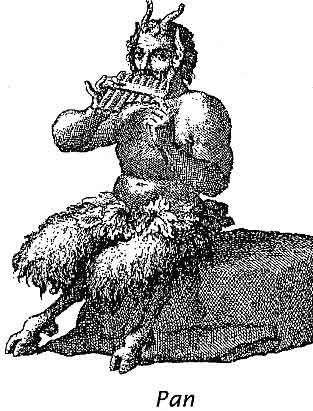














































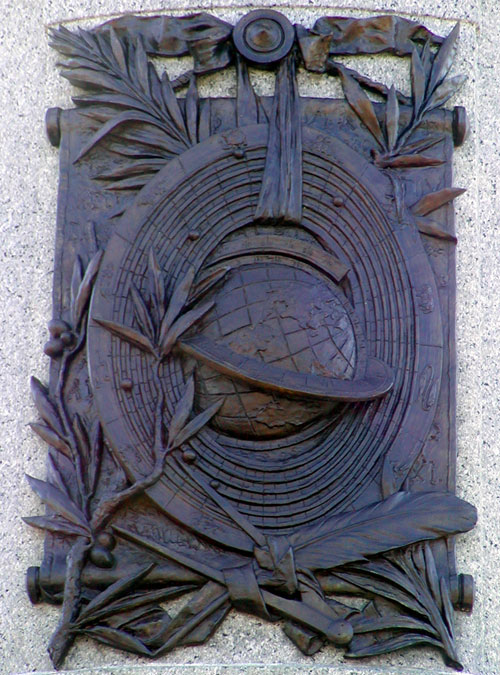







































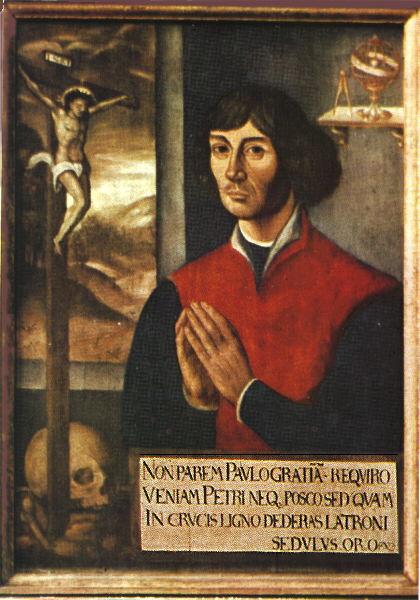















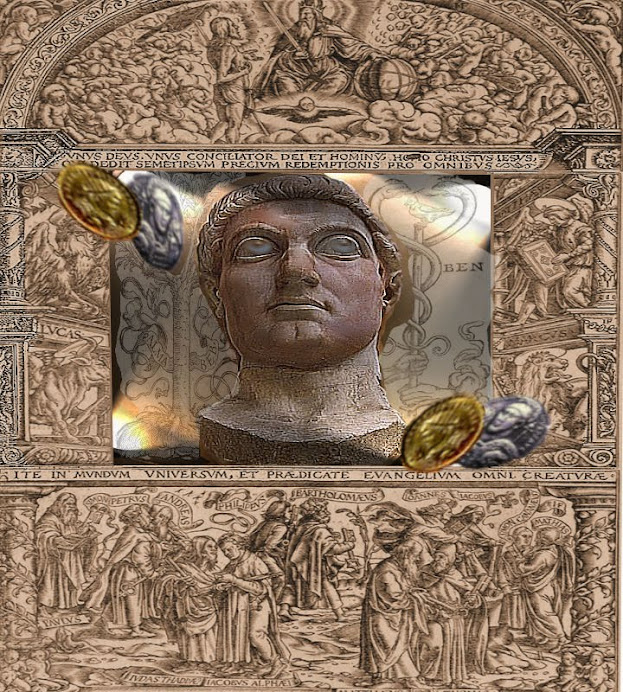



















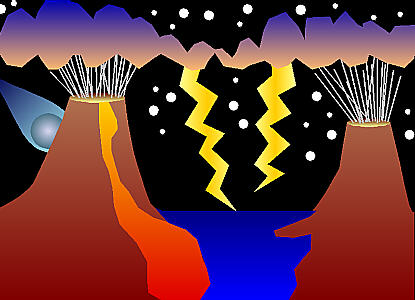


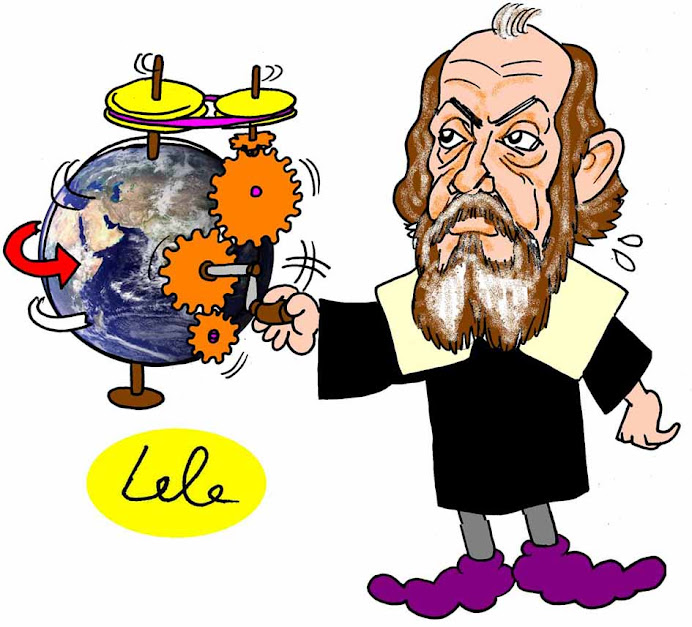













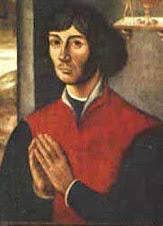.jpg)



















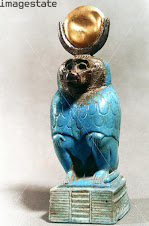








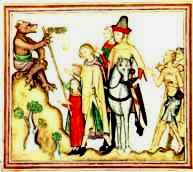

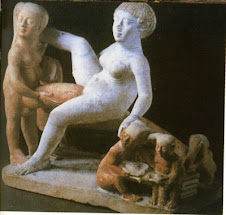











.jpg)






























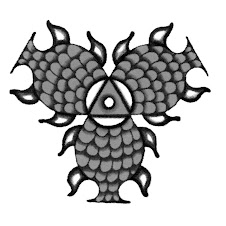











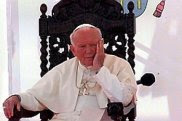















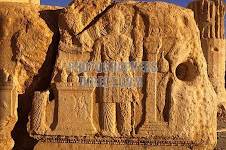
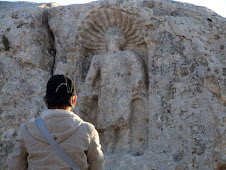






.gif)































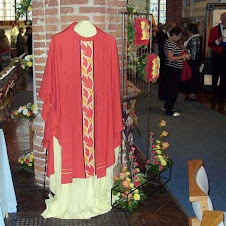




















































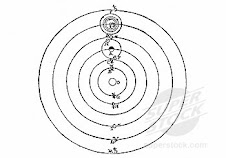

.jpg)













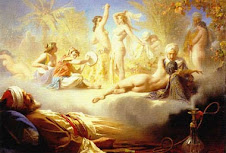
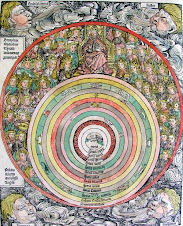












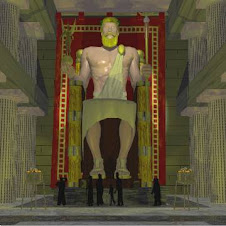


















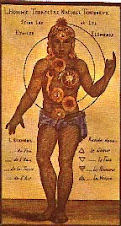






















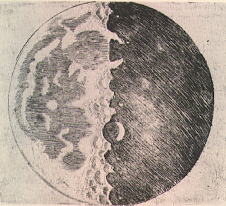




















































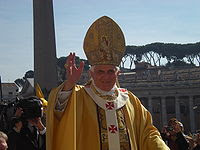

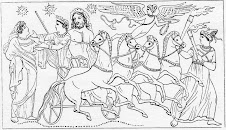








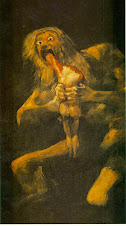




















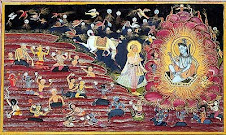

















++of+the+Sun+god..jpg)

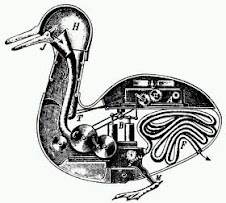








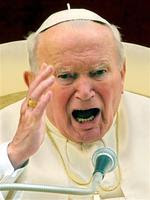


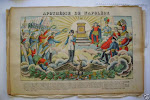



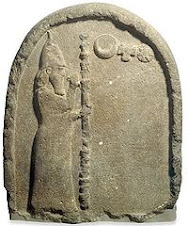





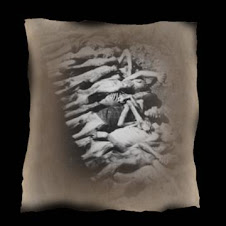




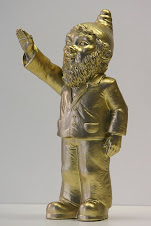
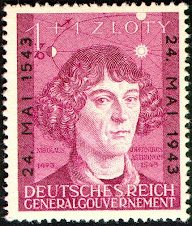








No comments:
Post a Comment